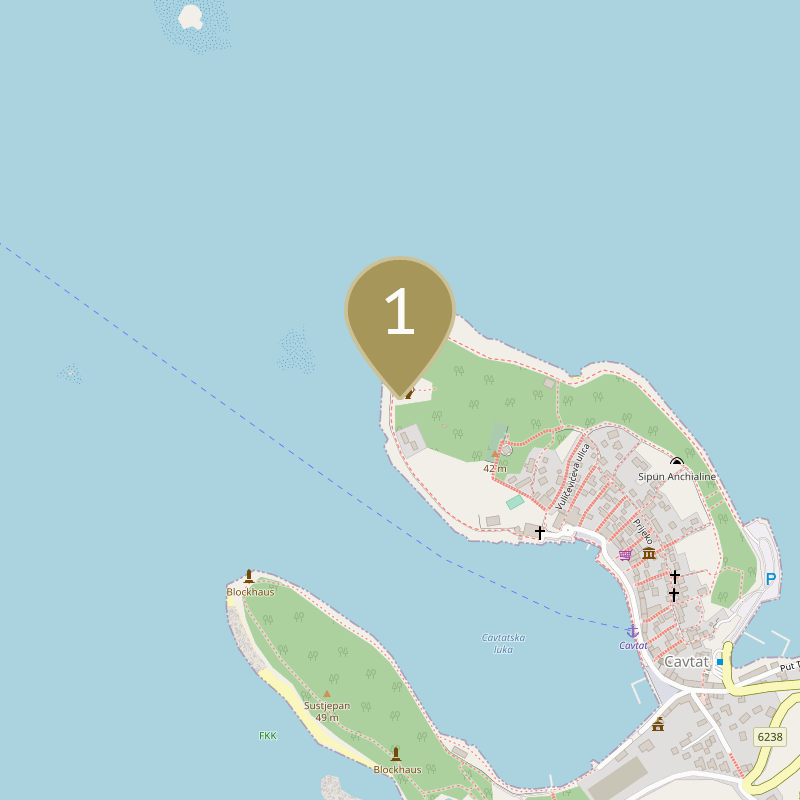
At the very south-western part of the Rat peninsula is an ancient site that was first explored by Niko Štuk in 1907. The entire area of the archaeological site throughout history has been levelled by massive dry stone walls on several levels that stretched from north to south and the terrain was filled with large quantities of land to create arable land. Previous research has revealed the remains of a building complex that adapts to the given terrain and cascades down to several levels towards the sea. It is correctly positioned from north to south, i.e. from east to west. In an archaeological research conducted in 2014, a narrow room with traces of a wall painting was discovered in the south-western part of the complex. The painting is of a simple geometric design in red on a light, almost white, plastered background. This specific form of decoration as we see it is preserved on fragments from the Rat site, the so-called linear style, appears only at the end of the 2nd century, and is characteristic of the 3rd century. In addition to the remains of the building complex, the function of which has not yet been fully defined, numerous movable remains have been found, such as fragments of pottery, glass and coins, which date the entire complex with upgrades to the 1st century BC to 4th century AD.
LITERATURE
- Faber, Aleksandra. 1966. Prilog topografiji ilirsko-rimskog Epidaura s posebnim obzirom na nova istraživanja. Opuscula archaeologica, 6, 1966. Zagreb. pp. 25–38
- Cambi, Nenad. 2006. Antički Epidaur. Dubrovnik, XVII, 3. Dubrovnik. pp. 185–217
- Menalo, Romana. 2009. Cavtat – poluotok Rat. HAG, 5, 2008. Zagreb.
- Menalo, Romana; Puhara, Helena. 2013. Cavtat – poluotok Rat. HAG, 9, 2012. Zagreb.
- Puhara, Helena. 2015. Cavtat – poluotok Rat. HAG, 11, 2014. Zagreb.
- Puhara, Helena. 2016. Cavtat – poluotok Rat. HAG, 12, 2015. Zagreb.
- Puhara, Helena. 2017. Cavtat – poluotok Rat. HAG, 13, 2016. Zagreb.
- Puhara, Helena; Požar Piplica, Ana. 2018. Novootkriveni fragment antičkog zidnog oslika iz Cavtata: istraživanje, konzerviranje i mogućnost prezentacije. Portal, 9. Zagreb.
- Štuk, Niko. 1908. Iskopine u Epidaurumu, (Cavtat, Ragusa Vecchia). Bulletino di archeologia e storia dalmata, XXX. Split. pp. 156–160
- Štuk, Niko. 1910. Iskopine u Epidaurumu, (Cavtat, Ragusa Vecchia). Bulletino di archeologia e storia dalmata, XXXIII. Split. pp. 150–151
- Topić, Nikolina; Puhara, Helena; Vuković, Lucija. 2019. Glass from the Roman Colony of Epidaurum: Archaeological Excavations in Cavtat, near Dubrovnik, Croatia. Journal of Glass Studies, 61. New York.

